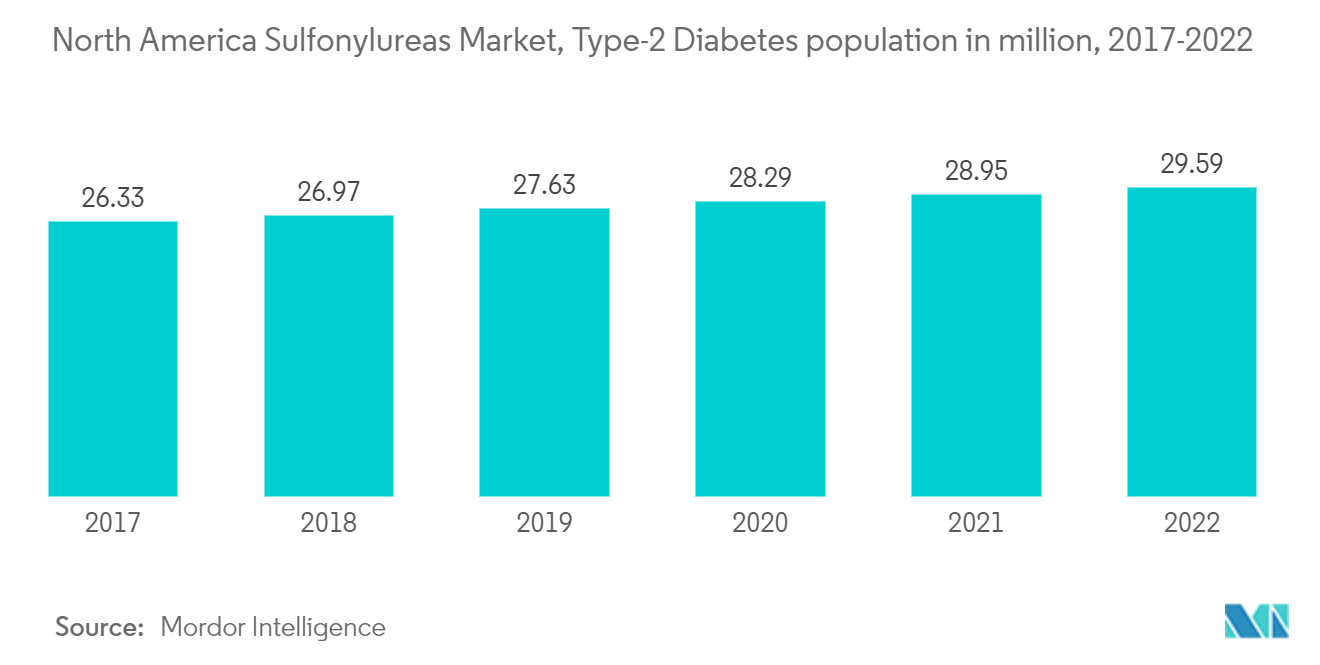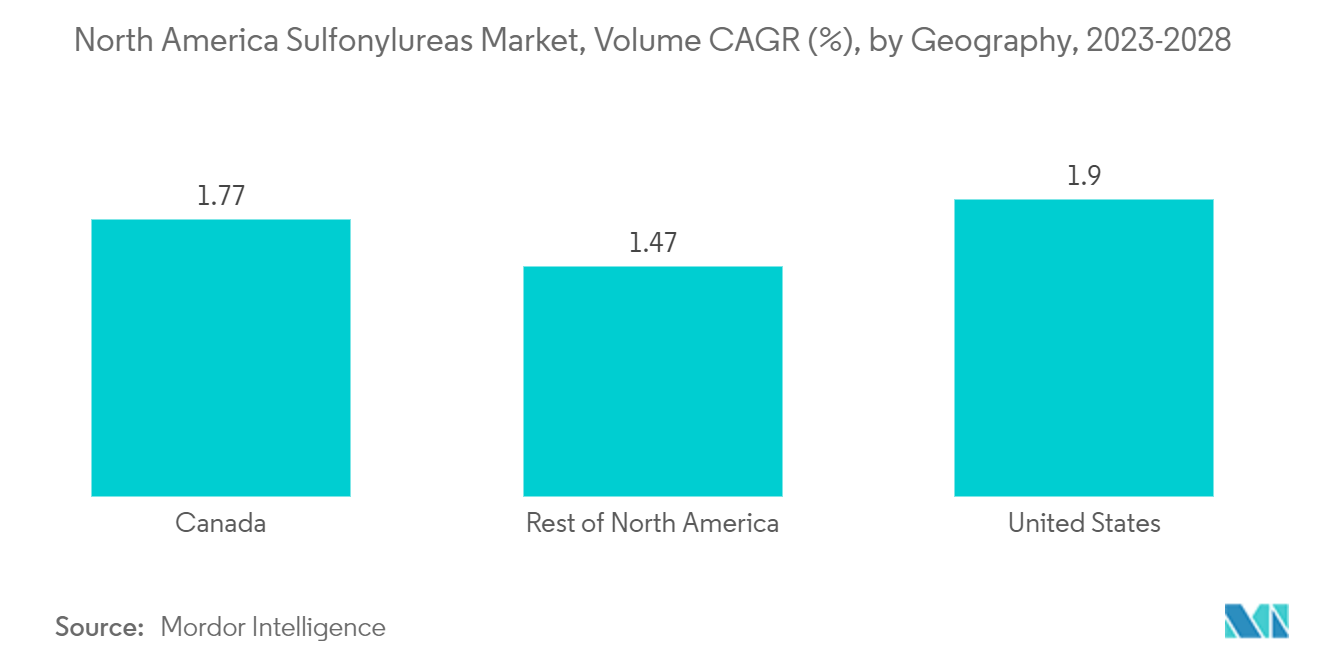Market Trends of North America Sulfonylureas Industry
Rising diabetes prevalence
The diabetes population in the North American region is expected to rise by more than 1% over the forecast period.
The Centers for Disease Control and Prevention National Diabetes Statistics Report 2022 estimated that more than 130 million adults are living with diabetes or prediabetes in the United States. Type 2 diabetes is more common, and diabetes is more consequential among communities of color, those who live in rural areas, and those with less education, lower incomes, and lower health literacy.
According to the Division of Metabolism and Endocrinology Products in the FDA's Center for Drug Evaluation and Research, 'Patients want effective treatment options for diabetes that are as minimally intrusive on their lives as possible, and the FDA welcomes the advancement of new therapeutic options that can make it easier for patients to control their condition.' Type 2 diabetes is increasingly prevalent and associated with an increased cardiovascular and renal disease risk. Along with lifestyle changes, metformin is usually the first-line pharmacotherapy, and sulfonylureas are added after metformin failure.
Sulfonylureas are a group of medicines used to manage Type 2 diabetes. Sulfonylureas lowers blood glucose levels by stimulating insulin release from the Beta cells of the pancreas. Their action depends on the presence of functioning Beta cells. Therefore, sulfonylureas do not work in people with type 1 diabetes. Sulfonylureas are insulin secretagogues as they work by causing the body to secrete insulin. Sulfonylureas bind to a channel of proteins in the pancreas (ATP-sensitive potassium channel) that increases the amount of insulin produced by pancreatic beta cells.
Most health insurance plans cover diabetes medications because they are considered medically necessary. Medicare generally covers diabetes medications. The American Diabetes Association includes a guide to Medicare and diabetes prescription drug benefits. For patients covered by insurance, typical out-of-pocket costs consist of a prescription drug copay ranging from USD 10 to USD 50, depending on the drug. If the patient takes multiple drugs, copays can total USD 200 monthly or more.
Owing to the rising rate of obesity, growing genetic factors for type-2 diabetes, the increasing prevalence, and the factors above, the market will likely continue to grow.

The United States holds the highest market share in the North America Sulfonylureas Market in the current year
The United States holds the highest market share of about 53.6% in the North America Sulfonylureas Market in the current year.
An estimated 1.4 million Americans are diagnosed with diabetes every year, according to the American Diabetes Association. Diabetes is one of the leading causes of death in Canada and other North American countries. The disease's growing incidence, prevalence, and progressive nature encouraged the development of new drugs to provide additional treatment options for diabetic patients. Non-insulin treatments, used as first-line therapies for patients with type 2 diabetes, currently capture more than half the sales in the anti-diabetic market. Oral anti-diabetic agents work in various ways to reduce blood sugar levels in people with type 2 diabetes. Some stimulate insulin secretion by the pancreas, and others improve the responsiveness of cells to insulin or prevent glucose production by the liver. Others slow the absorption of glucose after meals.
According to the American Diabetes Association's Standards of Medical Care in Diabetes, for lower-risk patients in whom hypoglycemia is likely not an issue, sulfonylureas are used as add-ons to metformin. In addition to using health insurance to help cover the costs of prescription drugs, many pharmaceutical companies also offer deals on the cost of prescription drugs.
Owing to the factors above, the market is expected to grow during the forecast period.


